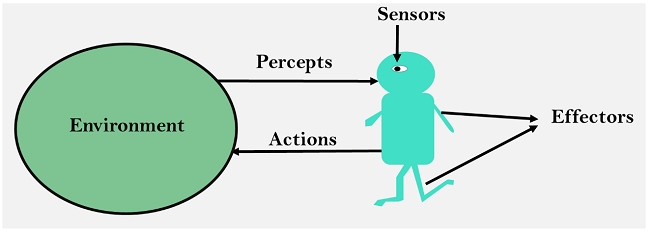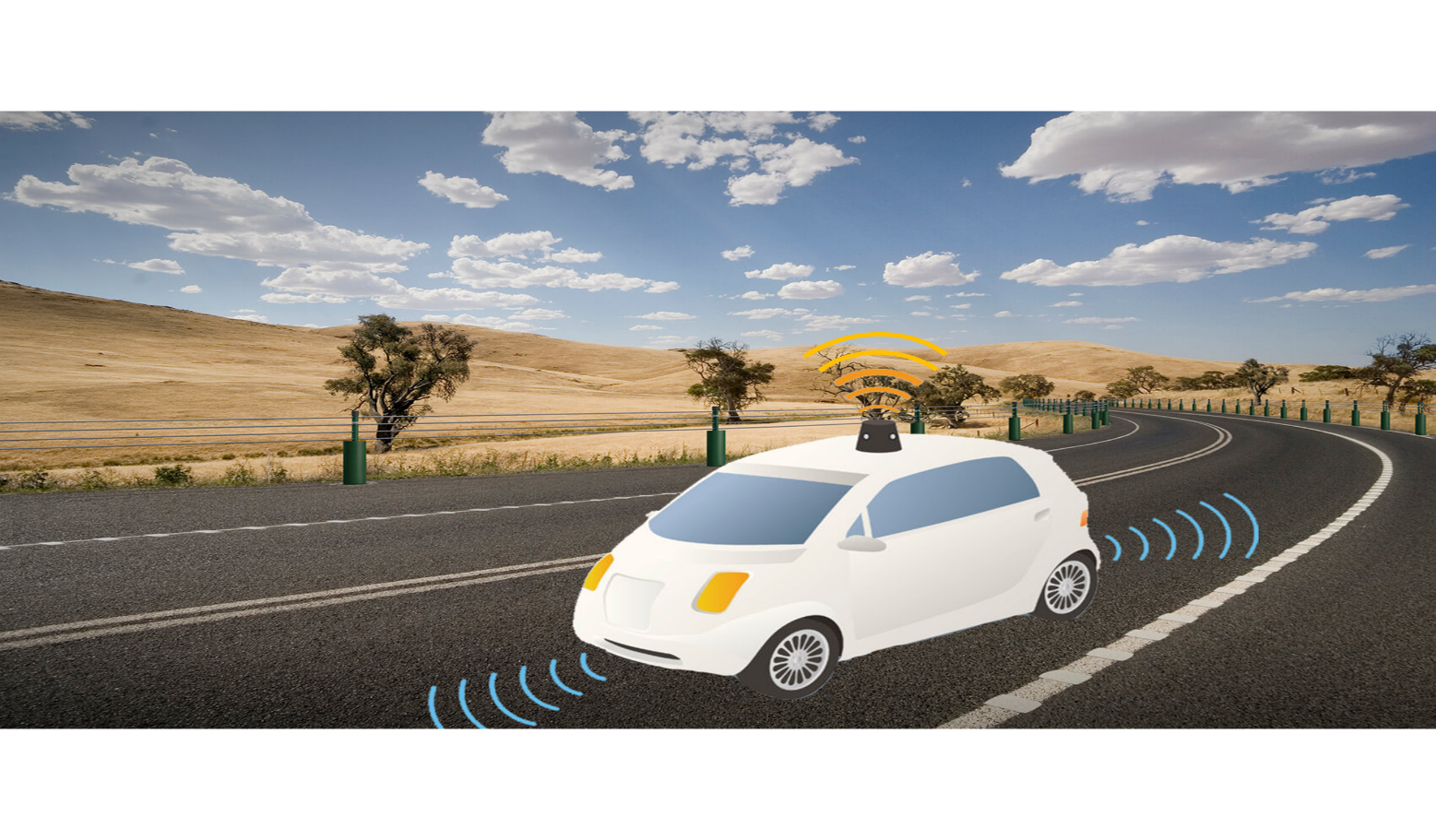Agents in Artificial IntelligenceAn AI system can be defined as the study of the rational agent and its environment. The agents sense the environment through sensors and act on their environment through actuators. An AI agent can have mental properties such as knowledge, belief, intention, etc. What is an Agent?An agent can be anything that perceiveits environment through sensors and act upon that environment through actuators. An Agent runs in the cycle of perceiving, thinking, and acting. An agent can be:
Hence the world around us is full of agents such as thermostat, cellphone, camera, and even we are also agents. Before moving forward, we should first know about sensors, effectors, and actuators. Sensor: Sensor is a device which detects the change in the environment and sends the information to other electronic devices. An agent observes its environment through sensors. Actuators: Actuators are the component of machines that converts energy into motion. The actuators are only responsible for moving and controlling a system. An actuator can be an electric motor, gears, rails, etc. Effectors: Effectors are the devices which affect the environment. Effectors can be legs, wheels, arms, fingers, wings, fins, and display screen. 
Intelligent Agents:An intelligent agent is an autonomous entity which act upon an environment using sensors and actuators for achieving goals. An intelligent agent may learn from the environment to achieve their goals. A thermostat is an example of an intelligent agent. Following are the main four rules for an AI agent:
Rational Agent:A rational agent is an agent which has clear preference, models uncertainty, and acts in a way to maximize its performance measure with all possible actions. A rational agent is said to perform the right things. AI is about creating rational agents to use for game theory and decision theory for various real-world scenarios. For an AI agent, the rational action is most important because in AI reinforcement learning algorithm, for each best possible action, agent gets the positive reward and for each wrong action, an agent gets a negative reward. Note: Rational agents in AI are very similar to intelligent agents.Rationality:The rationality of an agent is measured by its performance measure. Rationality can be judged on the basis of following points:
Note: Rationality differs from Omniscience because an Omniscient agent knows the actual outcome of its action and act accordingly, which is not possible in reality.Structure of an AI AgentThe task of AI is to design an agent program which implements the agent function. The structure of an intelligent agent is a combination of architecture and agent program. It can be viewed as: Following are the main three terms involved in the structure of an AI agent: Architecture: Architecture is machinery that an AI agent executes on. Agent Function: Agent function is used to map a percept to an action. Agent program: Agent program is an implementation of agent function. An agent program executes on the physical architecture to produce function f. PEAS RepresentationPEAS is a type of model on which an AI agent works upon. When we define an AI agent or rational agent, then we can group its properties under PEAS representation model. It is made up of four words:
Here performance measure is the objective for the success of an agent's behavior. PEAS for self-driving cars:
Let's suppose a self-driving car then PEAS representation will be: Performance: Safety, time, legal drive, comfort Environment: Roads, other vehicles, road signs, pedestrian Actuators: Steering, accelerator, brake, signal, horn Sensors: Camera, GPS, speedometer, odometer, accelerometer, sonar. Example of Agents with their PEAS representation
Next TopicAgent Environment
|
 For Videos Join Our Youtube Channel: Join Now
For Videos Join Our Youtube Channel: Join Now
Feedback
- Send your Feedback to [email protected]
Help Others, Please Share









